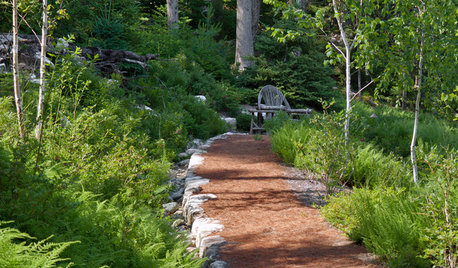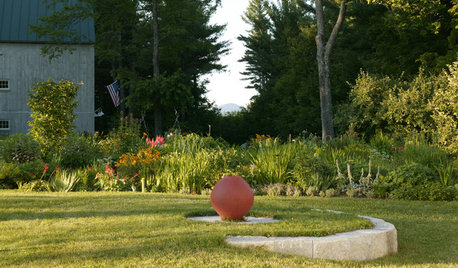When to pull weeds in my Bermudagrass?
georgia_transplant
15 years ago
Related Stories

EDIBLE GARDENSNatural Ways to Get Rid of Weeds in Your Garden
Use these techniques to help prevent the spread of weeds and to learn about your soil
Full Story
GARDENING GUIDES5 Things to Know About Weeding and Mulching Your Native Garden
What’s the best time to pull weeds? How thick should the mulch be? Here’s the scoop for a healthy landscape
Full Story
GARDENING GUIDESTackle Weeds the Natural Way
Instead of dousing your yard with chemicals to wipe out weeds, let time and nature work their magic via smothering and solarization
Full Story
GARDENING GUIDESGreat Design Plant: Bugle Weed, a Quick Ground Cover
It’s highly adaptable, suppresses weeds, reduces erosion and provide weeks of bright flowers. Just watch for invasiveness
Full Story
GARDENING GUIDES5 Ways to Naturally Win the Weed War
Show irksome weeds no mercy with these tricks for combating them sans chemicals
Full Story
GARDENING GUIDES5 Weed-Smothering Ground Covers
Let these landscape plants do the dirty work of choking out weeds while you sit back and enjoy the view
Full Story
HOUZZ TOURSHouzz Tour: From Overgrown Weeds to Picturesque Farmhouse Expanse
This once-neglected 100-acre South Carolina site now features a lake, a wood-filled farmhouse and a far-reaching view
Full Story
MOST POPULARWhen Does a House Become a Home?
Getting settled can take more than arranging all your stuff. Discover how to make a real connection with where you live
Full Story
LANDSCAPE DESIGNWhen Less Is Really More in Your Garden
8 ways you can make a powerful garden statement by embracing simplicity and surroundings
Full Story
GARDENING GUIDESWhen and How to Plant a Tree, and Why You Should
Trees add beauty while benefiting the environment. Learn the right way to plant one
Full Story





Kimmsr
okcdan
Related Professionals
Glendora Landscape Architects & Landscape Designers · Montgomeryville Landscape Architects & Landscape Designers · Pelham Landscape Contractors · Dickinson Landscape Contractors · North Haven Landscape Contractors · Pueblo West Landscape Contractors · Grand Rapids Swimming Pool Builders · Spring Swimming Pool Builders · Berkeley Fence Contractors · Chesterfield Fence Contractors · Fremont Fence Contractors · Madison Fence Contractors · Silver Spring Fence Contractors · Teaneck Fence Contractors · Saratoga Springs Fence Contractorsgeorgia_transplantOriginal Author
Kimmsr
okcdan
rcnaylor
georgia_transplantOriginal Author
pkapeckopickldpepprz
dchall_san_antonio
pkapeckopickldpepprz
pkapeckopickldpepprz
dchall_san_antonio
okcdan
pkapeckopickldpepprz
pkapeckopickldpepprz
garycinchicago
pkapeckopickldpepprz
Kimmsr
pkapeckopickldpepprz
okcdan
pkapeckopickldpepprz